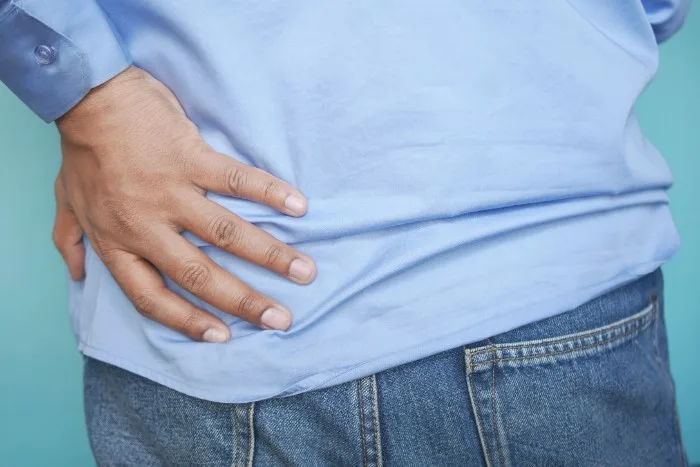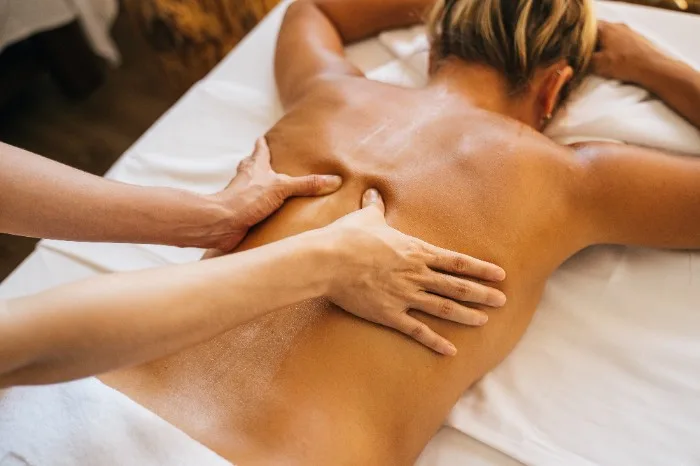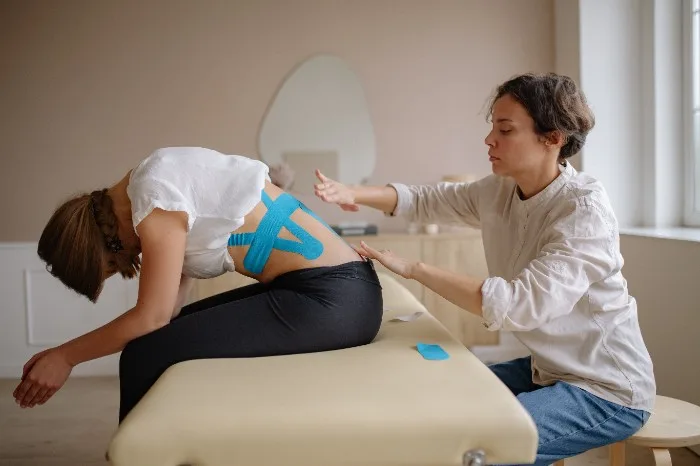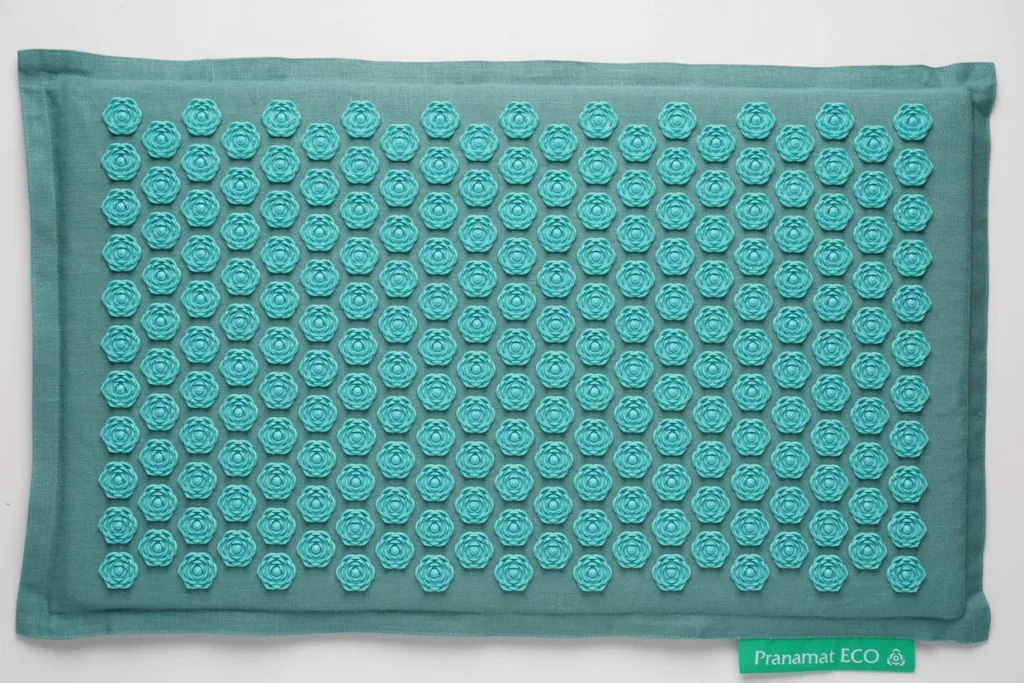In the intricate dance of life, middle back pain strikes a discordant note, halting our graceful twirls into a jarring halt. An unwelcome guest that afflicts countless individuals globally, middle back pain is indeed a pressing concern. Rooted in a medley of culprits – from the slump of poor posture, the monotony of repetitive motions, to the abruptness of sudden injuries – it’s a condition that knows no bounds.
As an acupressure specialist, I’ve walked alongside many on their journey through the labyrinth of this discomfort. But my connection runs deeper, for I, too have wrestled with the gnawing pain that takes residence in the mid-region of one’s back. I’ve tasted the bitter tang of struggle, attempting to navigate daily routines while bearing constant discomfort.
My experience, both personal and professional, has crafted me into not only an empathetic healer but also an intimate confidante of this condition. It’s given me the unique lens to view middle back pain – a lens colored with understanding, empathy, and an unwavering resolve to alleviate the suffering it causes.
As we embark on this journey together, I hope to share my insights and experiences, illuminating the dark corners of middle back pain and guiding you toward relief and recovery.
The Causes of Middle Back Pain
It’s important to understand the root causes of middle back pain in order to effectively manage and treat it. The spine is composed of 24 vertebrae, each with interlocking joints that allow for movement and flexibility. The thoracic spine, located in the middle and upper portion of the back, consists of 12 vertebrae that attach to the rib cage. Poor posture is one of the primary causes of middle back pain.
My Experience with Middle Back Pain
As someone who works at a desk for long hours every day, I was not surprised when I began experiencing persistent middle back pain several years ago.
At first, I assumed it was just a minor discomfort that would go away on its own with time. However, as time went on, my symptoms worsened until I found myself unable to sit or stand for long periods without experiencing severe pain.
It wasn’t until I sought out medical treatment and began incorporating targeted exercises into my routine that I saw significant improvement in my condition.
Living with middle back pain is a challenge, but it’s not one that you have to face alone. With the right knowledge and resources, you can effectively manage your symptoms and live a fulfilling life free from constant discomfort.
High-Level Overview: Understanding Middle Back Pain
Before delving into the causes and prevention of middle back pain, it is important to first understand the anatomy of this area. The middle back, or thoracic spine, is comprised of 12 vertebrae that make up the center portion of your spinal column.

Common Causes of Middle Back Pain
Middle back pain can be caused by a variety of factors. Poor posture is a common culprit as it can cause strain on the muscles and ligaments in the area. Additionally, injuries such as sprains or fractures to the vertebrae can cause acute or chronic pain in the middle back. Other potential causes include degenerative conditions such as arthritis or herniated discs.
Prevention of Middle Back Pain
Prevention is always easier than treatment when it comes to any type of pain. Taking care of your posture is a crucial step in preventing middle back pain – sit up straight with your shoulders relaxed and avoid slouching. Engaging in regular exercise that strengthens core muscles can also help prevent strain on the middle back.
Effective Methods for Treating Middle Back Pain

Physical Therapy and Exercise: The Middle Back Pain Game Changer
In my personal experience, physical therapy and exercise have been an absolute game changer in managing middle back pain. The key is to target the specific muscles in the middle back that are causing the pain with exercises that strengthen and stretch them.
Alternative Therapies: Exploring Beyond Traditional Medicine
While I strongly believe in the power of physical therapy and exercise, I have also found alternative therapies to be effective in managing my middle back pain. Acupuncture is one alternative therapy that has helped me tremendously. It involves the insertion of tiny needles into specific points on the body to alleviate pain and promote healing.
Medications and Medical Procedures: A Last Resort
When managing middle back pain, medications and medical procedures should be a last resort. Over-the-counter pain relievers can be helpful in the short term, but they only mask the pain without addressing the root cause.
Rarely Known Small Details: Tips and Tricks for Managing Middle Back Pain

Posture Correction Techniques
Have you ever heard the phrase “sit up straight?” Maybe your parents or grandparents used to say it to you all the time. As it turns out, they were right! Good posture is essential for preventing middle back pain.
Ergonomic Adjustments to Your Work Space
Speaking of ergonomic chairs, there are numerous other ergonomic adjustments you can make to create a comfortable workspace that supports good posture and reduces middle back pain.
Mindfulness Techniques to Reduce Stress
Stress is one of the most common causes of middle back pain as when stress builds up chronic muscle tension develops causing discomfort not only in our backs but necks shoulder etc. Therefore reducing overall stress levels is key when dealing with this type of pain.
Living a Life Free from Middle Back Pain
Living with middle back pain does not have to be a life sentence! With proper treatment methods tailored to your unique situation, you too can live a happy life free from discomfort!
The Turning Point: Discovering the Acupressure Mat

Amidst my recovery endeavors, I stumbled upon a game-changing discovery – an acupressure mat. Picture a mat lined with tiny pressure points ready to soothe your aching muscles.
Intriguing, right?
This simple yet effective tool rapidly became crucial in my fight against middle back pain.
Incorporating the acupressure mat into my routine was like adding a secret weapon. The initial sessions were slightly uncomfortable, a feeling similar to prickling pins. However, within a week, it started becoming a source of relief. It felt like hundreds of tiny masseuses were working tirelessly to ease my pain.
The beauty of this method is that it’s all-natural and can be easily incorporated into daily routines. I often used the mat to read, watch television, or meditate. Within weeks, I noticed a significant decrease in the frequency and intensity of my back pain.
Finding the acupressure mat was a turning point in my journey towards a pain-free back.
It’s a testament that sometimes, the most effective solutions can come from unexpected places. The power to alleviate our pain might lie in our hands, or in this case, under our backs!
Read also: What You Need to Know About Acupressure Mats
Understanding the Science Behind Acupressure Mats
The acupressure mat functions on the principles of acupressure, a form of traditional Chinese medicine. The mat has thousands of tiny spikes which apply pressure to various points on your body, stimulating blood flow and releasing tight muscles.
The premise is to relieve pain, promote relaxation, and enhance overall wellbeing. The effects might vary for each person, but it positively impacted my journey. Read also: The Science Behind Standing on an Acupressure Mat. Best Positions, Practices, and Tips

Tips for Using an Acupressure Mat
It might feel intimidating to lie on a bed of spikes, but once you get accustomed to it, you’ll realize it’s not as scary as it sounds. Here are a few tips to get you started:
- Start Slowly: When you first start using the mat, limit your sessions to about 10 minutes. As you get more comfortable, gradually increase your time on the mat.
- Use a Thin Layer of Clothing: It’s recommended to start with a thin layer of clothing between your skin and the mat. As you get used to the sensation, you can use the mat directly on your skin for maximum benefits.
- Regular Practice: Consistency is key. Try to use your acupressure mat daily for optimal results. You can use it while doing other activities like reading or watching television.
More: How to Use an Acupressure Mat
The Journey Continues: Managing Middle Back Pain
Though my middle back pain has significantly decreased, it’s still something I must manage regularly. Incorporating the acupressure mat into my routine, regular exercise, and mindful posture practices has been a game-changer.
Seeking Professional Help
It’s crucial to note that while self-help techniques and tools like the acupressure mat can be highly beneficial, they should not replace professional medical advice. Always consult with a healthcare professional if you’re experiencing persistent pain. Everyone is unique, and what worked for me may not work for others.
Conclusion
Middle back pain, though troublesome, can be managed effectively with the right strategies and tools. My personal experience has shown me the importance of taking proactive steps toward understanding the problem and seeking solutions.
The journey with middle back pain can be challenging and arduous, but it is not one you need to face alone. By sharing my experiences and discoveries, I hope to shed light on the potential relief from unexpected places like an acupressure mat.
And most importantly, I hope to inspire others suffering from similar pain to continue their own journey of recovery and discovery. Check also my top of Best Acupressure Mats of 2023 (Ranked & Detailed Review)
Remember, pain does not define you, and relief is within reach.
FAQs treatment for middle back pain
Q: What causes middle back pain?
A: The causes of middle back pain can range from muscle strain to more serious conditions such as herniated discs or osteoarthritis.
Q: How can I relieve my middle back pain at home?
A: Home remedies for middle back pain may include rest, ice and heat therapy, over-the-counter pain relievers, and gentle exercises. However, it’s crucial to consult a healthcare professional for severe or persistent pain.
Q: How long does middle back pain last?
A: The duration of middle back pain varies greatly depending on the cause. Some conditions may improve within a few weeks, while others might take several months.
Q: Can poor posture cause middle back pain?
A: Poor posture can lead to muscle strain in the middle back over time.
Q: Can diet and exercise really help alleviate middle back pain?
A: Yes, maintaining a healthy weight through diet and exercise can reduce the stress on your back, thus mitigating pain.
Q: Can upper and middle back pain be a symptom of a spine problem?
A: Yes, upper and middle back pain can indicate spinal issues such as a herniated disc, scoliosis, or spinal stenosis. It is advisable to consult with a pain or spine specialist to diagnose and treat underlying spinal problems.
Q: How does poor posture contribute to middle back pain?
A: Poor posture, often a consequence of sitting at a desk for long hours or carrying heavy bags on one shoulder, can cause strain on the back muscles and spine. This can result in pain and stiffness in the middle and upper back. Regular stretching and strengthening exercises, along with maintaining proper posture, can help relieve pain and prevent further damage.
Q: What are some effective treatment options for middle back pain?
A: Treatment options for middle back pain may include physical therapy, pain medication, massage therapy, or in severe cases, surgery. Home remedies like stretching and strengthening exercises, heat or ice therapy, and maintaining proper posture can also provide pain relief.
Q: Can lower back pain or neck pain cause pain in the middle back?
A: Yes, pain in the lower back or neck can radiate to the middle back, leading to pain and discomfort in the upper body. Early identification and treatment of the cause can prevent further discomfort from spreading.
Q: How can I relieve pain and swelling in the middle back?
A: Remedies such as heat or ice therapy, over-the-counter pain medication, or massage therapy can help relieve pain and swelling in the middle back. However, it’s important to consult a doctor if the pain persists or worsens after these remedies.
Q: Are there any home remedies I can try for middle back pain?
A: Home remedies that can help alleviate middle back pain include arching your back, performing back stretches, and using a foam roller to massage the affected area. However, always consult with a doctor before attempting any new remedies.
Q: How can I prevent middle back pain from occurring?
A: Preventive measures for middle back pain include maintaining good posture, exercising regularly to stretch and strengthen back muscles, and avoiding heavy lifting. Taking breaks while sitting for prolonged periods and avoiding carrying heavy bags on one shoulder can also help.
Q: What should I expect during a middle back pain diagnosis?
A: During a middle back pain diagnosis, a doctor may perform a physical examination, inquire about your medical history, and recommend imaging or other diagnostic tests. After identifying the problem, the doctor may suggest a treatment plan tailored to your specific condition.
Q: Can chronic back pain be treated?
A: Yes, chronic back pain can be managed through various methods including physical therapy, medication, and in some cases, surgery. Early identification and treatment of the cause can prevent the pain from becoming chronic.

